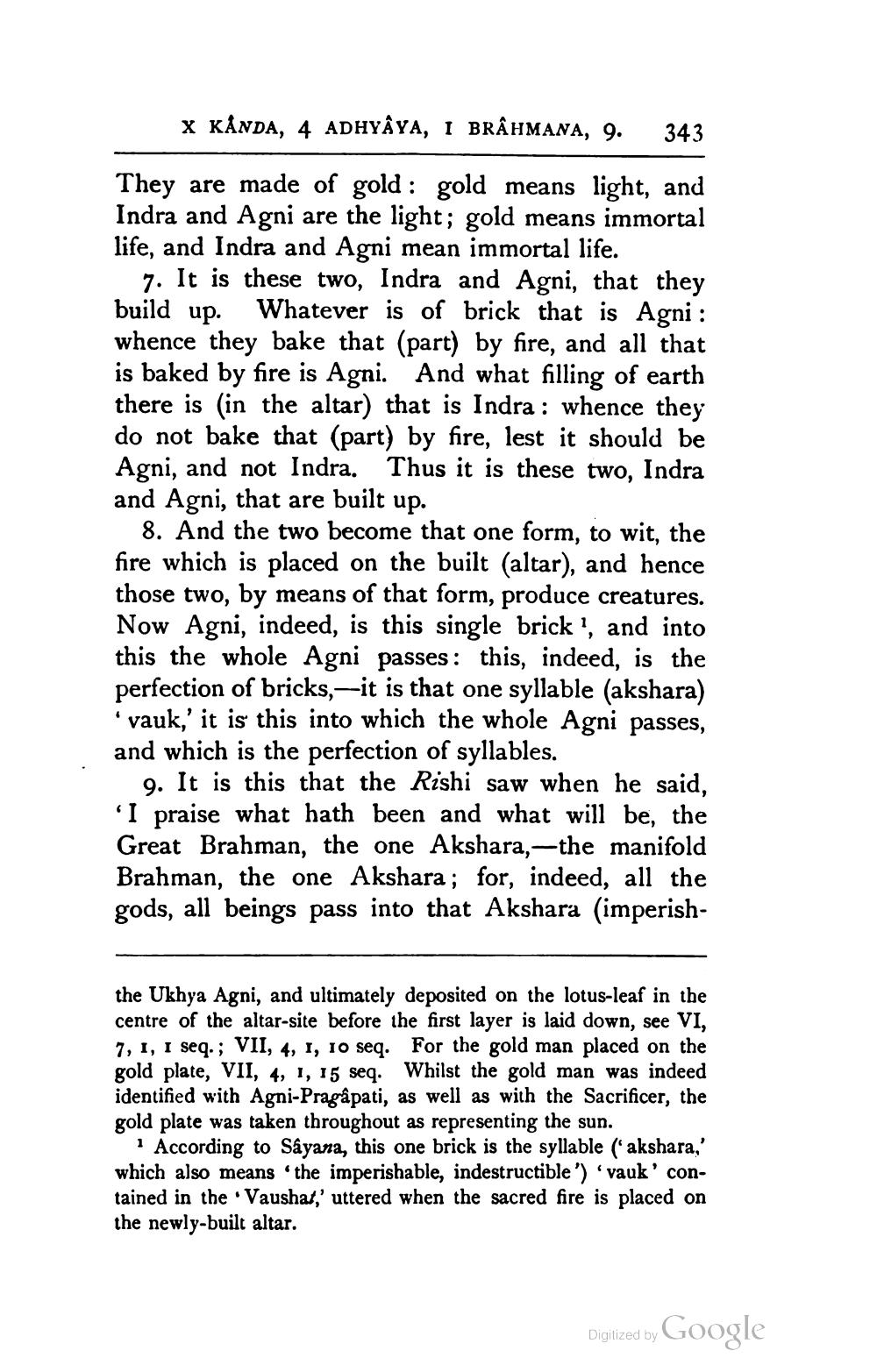________________
X KANDA, 4 ADHYAYA, I BRAHMANA, 9. 343
They are made of gold: gold means light, and Indra and Agni are the light; gold means immortal life, and Indra and Agni mean immortal life.
7. It is these two, Indra and Agni, that they build up. Whatever is of brick that is Agni: whence they bake that (part) by fire, and all that is baked by fire is Agni. And what filling of earth there is (in the altar) that is Indra: whence they do not bake that (part) by fire, lest it should be Agni, and not Indra. Thus it is these two, Indra and Agni, that are built up.
8. And the two become that one form, to wit, the fire which is placed on the built (altar), and hence those two, by means of that form, produce creatures. Now Agni, indeed, is this single brick', and into this the whole Agni passes: this, indeed, is the perfection of bricks,-it is that one syllable (akshara) vauk,' it is this into which the whole Agni passes, and which is the perfection of syllables.
9. It is this that the Rishi saw when he said, 'I praise what hath been and what will be, the Great Brahman, the one Akshara,-the manifold Brahman, the one Akshara; for, indeed, all the gods, all beings pass into that Akshara (imperish
the Ukhya Agni, and ultimately deposited on the lotus-leaf in the centre of the altar-site before the first layer is laid down, see VI, 7, I, I seq.; VII, 4, 1, 10 seq. For the gold man placed on the gold plate, VII, 4, 1, 15 seq. Whilst the gold man was indeed identified with Agni-Pragâpati, as well as with the Sacrificer, the gold plate was taken throughout as representing the sun.
1 According to Sâyana, this one brick is the syllable ('akshara,' which also means 'the imperishable, indestructible') 'vauk' contained in the Vaushat,' uttered when the sacred fire is placed on the newly-built altar.
Digitized by
Google




